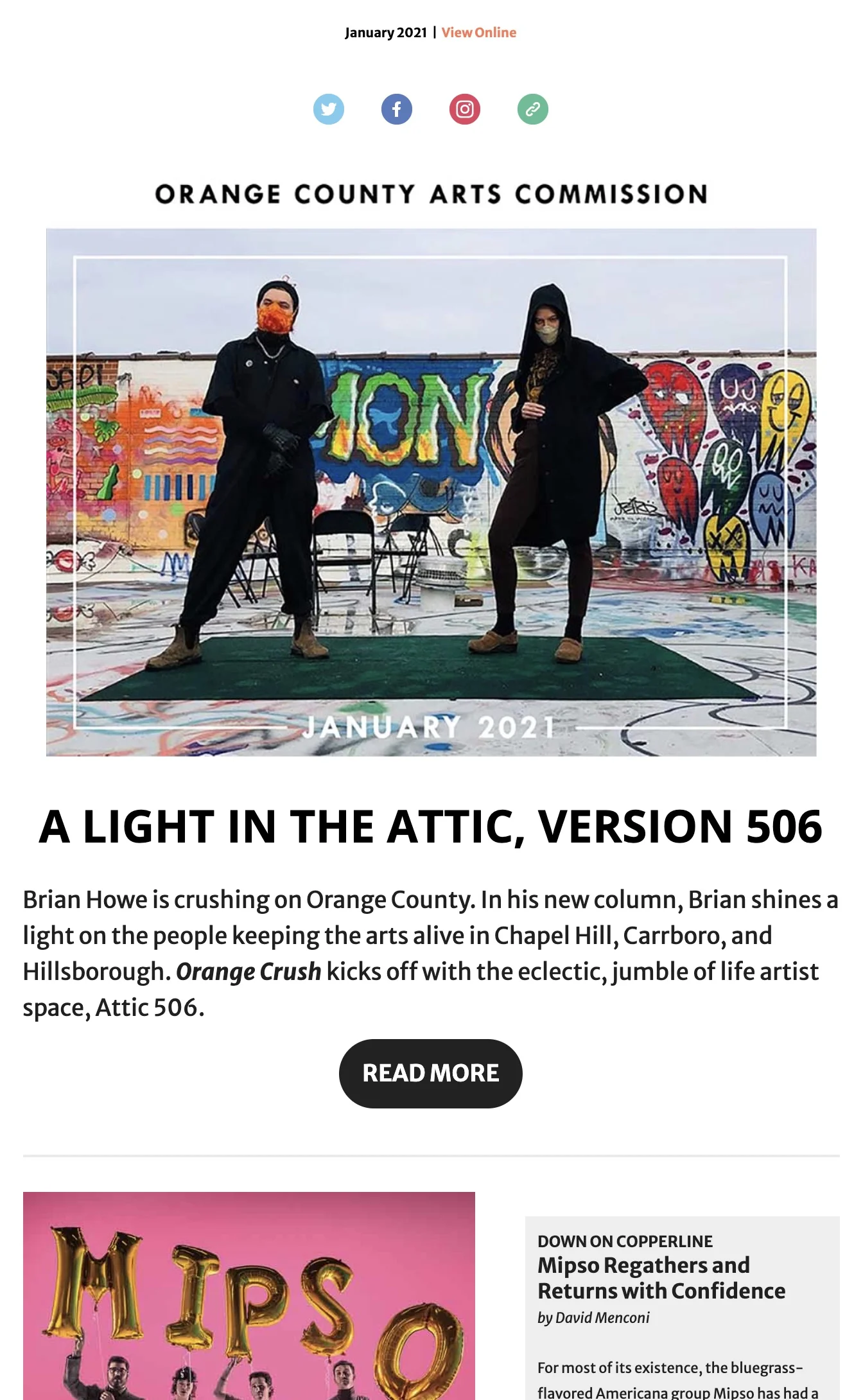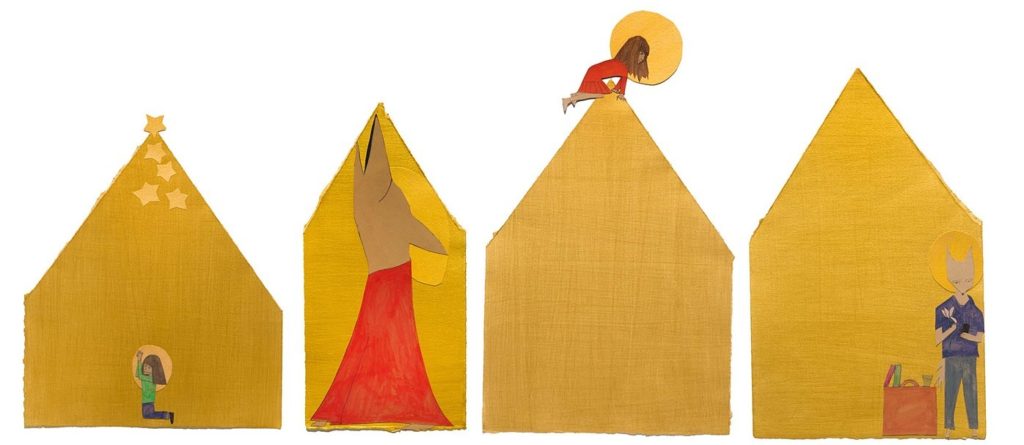
When I call Chapel Hill artist Meredith Haggerty on the phone for her interview, she greets me like an old friend, her warmth and energy abundantly clear from the moment she answers the phone. It’s an interview to highlight her work and her accomplishments, but throughout she continually expresses curiosity and excitement about others’ art, even asks how to learn about my own work. Hearing Meredith talk about her creative practice and artwork, it’s quickly apparent that joy and a focus on community are integral to her identity as an artist and that she believes in community involvement and connection as an essential component of her art. Meredith Haggerty is a collage artist, storyteller, and performer. She finds inspiration in artists like the paper cutout masters Kara Walker and Henri Matisse, the vivid colorists and social observers Frida Kahlo and Kerry James Marshall, the fairy tale re-imaginers Helen Oyeyemi and Christina Rivera Garza, and the storytellers and community builders Lynda Barry and Bob Dylan. Like her influences, Meredith’s artwork spans a variety of mediums—paper arts, picture books, comics, illustration, performance, ritual, meditation. Her practice is joyful in its abundance and variety, and her work feels joined by interests in paper arts, art as holding space for what is, and art as a mind-body practice.
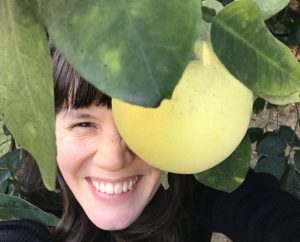
Meredith came to creating art through a love of art history in high school. When beginning to study art history in undergrad at Wayne State University, she was required to take a studio art course. From that studio art course (Drawing 101), she fell in love with creating, and since then she’s never looked back. She began practicing collage in particular after her MFA as a way to create during a time in her life when she was working a lot and raising a little one. “I needed to figure out a way of making that allowed me to create in a piece by piece approach, to be able to come back to materials and reuse materials,” explains Meredith. Collage is a good practice for this: you can use anything, you can do it anywhere, you can take parts of it apart and save parts of it and get rid of parts. “I needed to be able to put things away and out of reach,” she says, laughing. “It’s a lot different now—now my daughter’s in the studio with me, hanging out with me.”
It was also around this time in Meredith’s life that she began working with art as mind-body practice. After her MFA, she started working at University of Chicago with student health to help create a grassroots wellness program, the foundation for what is now UChicago’s wellness program. Among other projects, she taught a restorative yoga class at Rockefeller Chapel at UChicago, a cathedral-shaped building that now functions as an interfaith chapel. “Tuesday night, forty or fifty people would gather and we would just lie there and look at the ceiling, and I’d guide them through this really gentle yoga practice, and part of the process was about being in this space,” She also taught mindfulness workshops within UChicago’s art museum The Oriental Institute. “My colleagues and I would have the participants go do things like ‘go look at one object in this museum for five minutes.’ The average time someone takes with an object in a museum is something like 19 seconds. So the thing that would come out when we’d have these discussions after having people spend five minutes with one object and getting bored and coming back to it and noticing more details, it got really juicy!”
After more than a decade at UChicago, Meredith and her family found her way to Chapel Hill in order to be closer to Meredith’s parents. Here, she attends and offers studio classes and works on writing and collage daily. She leads programs like The Collage Stop, a project in which artists exchange and re-purpose work scraps into new art. Additionally, she maintains a lively correspondence of mail art. And what is mail art, you ask? “Art that gets mailed!” exclaims Meredith, laughing. “Art that goes into the mail, and then mailing is part of the art’s life, part of the life of the object.” Mail art is a big part of Meredith’s practice, another way to engage with art as mind-body practice and as community generated, an embrace of uncertainty in the process of creation. “I enjoy not really knowing what something is going to look like, but sort of acknowledging that we’re all leaning on each other and a lot of things are out of our control. Mail art to me is so much about that,” she explains.
Currently, Meredith’s working on two mail art related projects, the first a series of paper cutout Black Lives Matter signs entitled “Looking In, Looking Out.” While Black Lives Matter signs are generally displayed in people’s yards, Meredith’s are made to go in people’s home windows. It seems particularly important in this time that we consider our personal positioning, and these Black Lives Matter paper cutout signs offer a prompt in that direction. The signs are made from paper with cutout letters. When displayed in a window in the evening, the homes’ interior lights shine through, speaking Black Lives Matter into the dark outside. I think here of the practice of lighting candles during times of loss and grief, rituals of solidarity, that there’s a motion of interiority here that’s important. In the daytime, inversely, “when the sun comes into the house, shining through the letters, it brings these words into their house and into their daily lives. Mine goes through my dining room and then into my kitchen and back around and almost any sunny morning, those words circulate in my day.”
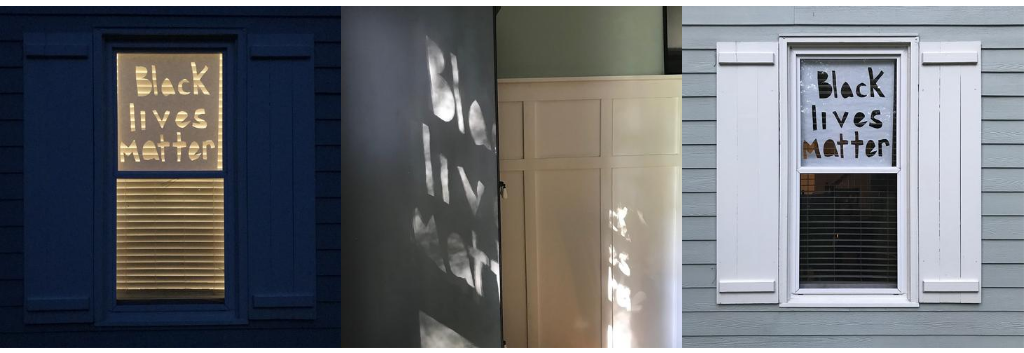
“There’s a quality to repeatedly cutting out these letters of Black Lives Matter, and I started cutting out more of them. People really responded, and so I started making more of them, I made a bunch.” Meredith sends the signs to neighbors, friends, folks near and far. “I keep cutting them out, and I keep sending these signs out, so in a way its its own meditative practice. Almost nightly making signs. And in the morning—my daughter puts the stamps on the envelopes and we walk to the mailbox together and we put it in together and it becomes this action that we’re doing that’s related to the here and now.” The signs also allow a form of gathering in a time when we cannot join together as easily. “I know some people cannot go to protests, and I wanted to offer a way for people to show solidarity and come together without necessarily attending a protest as the sole option, creating ways to show up, showing up with what you have,” explains Meredith.
In addition to the Black Lives Matter signs, Meredith is working on a mail art project of a community built flower collage. Between now and Labor Day, she’s collecting flat-cut flowers of any shape, theme, material, or size. So far people have sent flowers made of chopped up tin foil, of magazine cutouts, of repurposed art projects, to name a few. Meredith’s received women’s rights flowers, pandemic flowers, protest flowers, petrified flowers, mandala flowers, and more. “I really don’t know what’s going to happen to them in terms of where this collage will end up. There’s a whole bunch of uncertainty. I’m just inviting people to send flowers. Mid-September, I’ll start some type of collage,” explains Meredith.
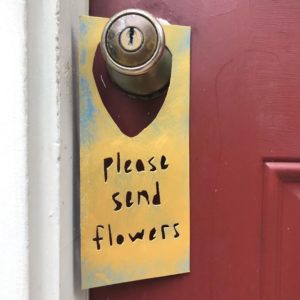
Again, Meredith draws excitement and possibility from creating within uncertainty, in creating from what is. She finds delight in the art of the process, in bringing community together through art. Every day, handmade flowers arrive at her house at a time when the arrival of mail is an event in the day, for a project still in the process of being imagined. “Oh my gosh, it’s such a joy!” she exclaims. “It’s such a joy to be opening my mail box and be receiving so many flowers! It’s been really lovely. I didn’t think it was going to happen—I didn’t know if people would want to send them or would have time with Covid, and the response has been really wonderful.” Anybody can contribute, and if you’re interested, Meredith invites you to send one her way. Email mer@merhaggerty.com for her mailing address.
Learn more about Meredith Haggerty and see more of her work at merhaggerty.com.
